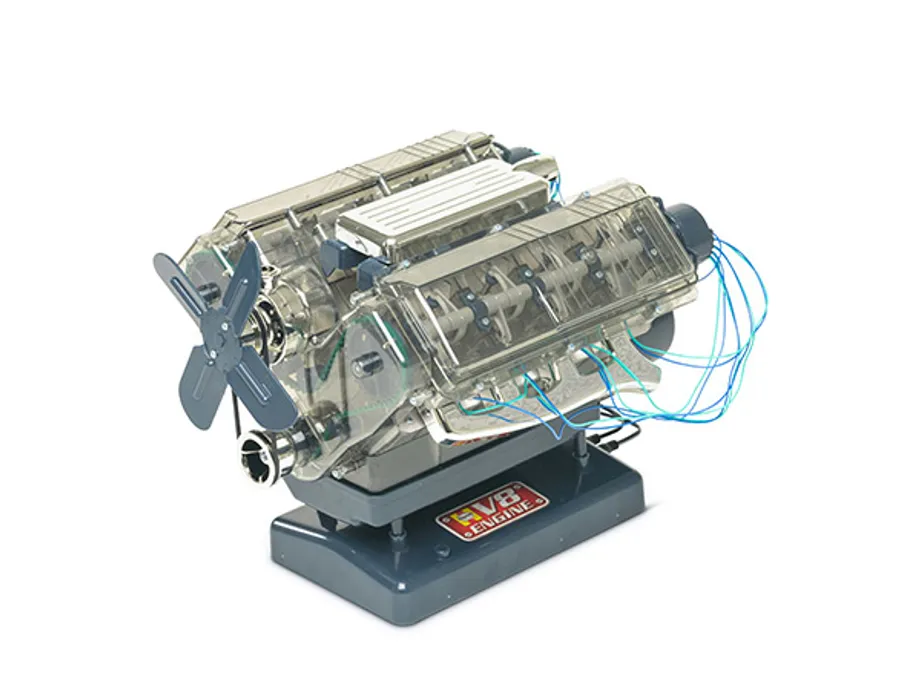Internal combustion engine
An internal combustion engine (ICE) is a heat engine where the combustion of a fuel occurs with an oxidiser (usually air) in a combustion chamber that is an integral part of the working fluid flow circuit.
In an ICE the expansion of the high-temperature and high-pressure gasses produced by combustion apply direct force to some component of the engine. The force is applied typically to pistons, turbine blades, or a nozzle.
This force moves the component over a distance, transforming chemical energy into useful mechanical energy. The first modern (petrol-powered) ICE was created in 1864 by Siegfried Marcus.
Model of a V8 engine
This is an assembled model of a V8 car engine, originally supplied in kit form made by Haynes. This is a working model but it is not meant to represent the V8 engine of a particular car.
A V8 engine is an eight-cylinder V engine with the cylinders mounted on the crankcase in two sets of four cylinders, in most cases set at right angles to each other, but sometimes at a narrower angle, with all eight pistons driving a common crankshaft.

